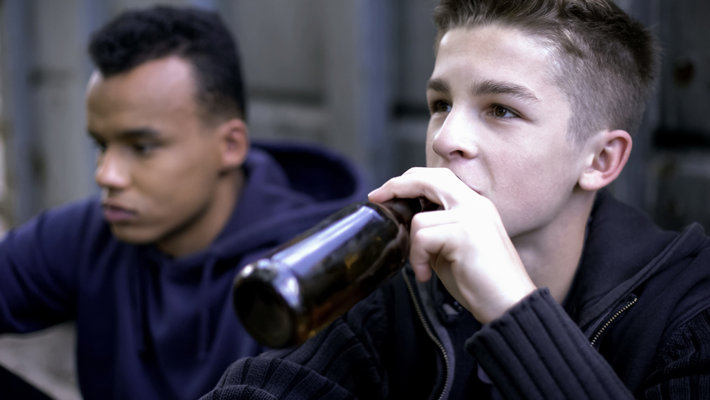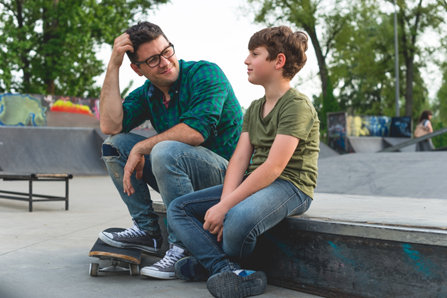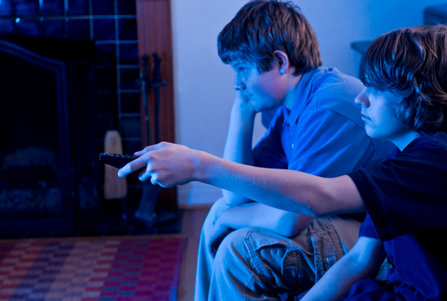The Importance of Talking to Your Teen or Young Adult Child about Alcohol

As much as parents might not want to think about it, alcohol use is quite prevalent among young people, even those under the age of 21. That is something to be concerned about. We might chalk it up to “just what teens and young adults are going to do,” but we walk on thin ice when we do that. Alcohol use among adolescents can have serious consequences.
According to the National Institute on Alcohol Abuse and Alcoholism, young people who drink alcohol are more likely to be involved in a violent crime and alcohol-related traffic accidents, and to have problems in their schooling. And that’s just the tip of the iceberg (more on the statistics later). The important thing is that parents understand the need for them to talk to their kids about alcohol and that they do so.
But how does a parent have the conversation?
Tips for Talking to a Teen or Young Adult about Alcohol
Talking to kids about alcohol always sounds or seems more complicated and scary than it ends up being. Parents put a lot of significance on this conversation, right up there with asking a boss for a promotion or interviewing for a new job. The alcohol conversation will vary quite a bit based on the son or daughter, their age, their current feelings about alcohol, the parents’ relationship with them, and so on. But here are a few tips that any parent can use:

- Start early. Most parents don’t even think about talking to their kids about alcohol until their kids are already teenagers. But that’s far too late. By then it’s likely a peer has already influenced their kids. Better to start explaining what alcohol is to one’s kids when they are between the ages of 7 and 12. Kids should learn early on that there are some substances that Mom or Dad might have that are not for children, and why.
- As one’s children grow up, repeat the conversation. Parents make a mistake when they think they can have this conversation once and just leave it at that. As kids age into adolescence, teen years, and the early twenties, parents should talk to them about alcohol and drinking a couple of times per year. The conversation will change as the kids age, but the underlying premise should always be the same, i.e., avoid alcohol consumption.
- Set a good example. Kids learn by observation and mimicry. If a child grows up with a parent who drinks too much, odds are they’ll do the same. Parents should keep their alcohol consumption to an absolute minimum. They should do this not only for their kids’ health but for theirs too.
- Talk to kids about saying no. The most common factor in teen drinking is peer pressure. That is likely why college students drink more than non-college students. College students are more likely to be in group environments than non-college students. Young people have to know how to say no because they are probably going to have alcohol pushed on them at some point or other. Parents should teach their kids that the easiest way to avoid peer pressure when a simple “No” isn’t working is to leave the environment where the drinking is occurring.
The Statistics—The True Harm in Teen and Young Adult Drinking
Several organizations publish critical data on alcohol consumption. The one referenced here is the National Institute on Alcohol Abuse and Alcoholism. According to a survey that NIAAA did, about 33.1 percent of 15-year-olds reports that they have had at least one drink in their lives. About 7.7 million young people between the ages of 12 and 20 say they drank within the past month. And that is just alcohol consumption, not binge drinking or heavy drinking.
As for binge drinking—defined as periods or spurts of heavy drinking followed by periods of abstinence—about 5.1 million young people (that’s 13.4 percent of this age group) engaged in binge drinking in the past month. That means that millions of kids from the ages of 12 to 20 are consuming alcohol in intensive, massive quantities every month.
The last classification of alcohol consumption is heavy drinking. Such is classified as drinking alcohol in excessive amounts and doing so frequently. According to the National Survey on Drug Use and Health (NSDUH) results, about 1.3 million people in the 12 to 20 age band admitted to substantial alcohol misuse in the last month. That figure represents about 3.3 percent of the total population of Americans ages 12 to 20.
Another point that NIAAA talks about is the prevalence of alcohol consumption among college students. Interestingly enough, college students between the ages of 18 and 22 seem to misuse alcohol at rates far above their non-college student peers. According to NIAAA research, 58 percent of college students drank alcohol at least once in the past month, as compared to 48.2 percent of other persons of the same age.
As for binge drinking, 37.9 percent of college students admitted to binge drinking in the past month, compared to 32.6 percent of their non-college student peers. As for heavy drinking, 12.5 percent of college students 18 to 22 reported heavy drinking in the past month, as compared to only 8.5 percent of non-college students in the same age bracket
“Research indicates that alcohol use during the teenage years could interfere with normal adolescent brain development and increase the risk of developing AUD [Alcohol Use Disorder].”
Let’s close the statistics section with this final word of warning against young adult drinking from the National Institute on Alcohol Abuse and Alcoholism: “Research indicates that alcohol use during the teenage years could interfere with normal adolescent brain development and increase the risk of developing AUD [Alcohol Use Disorder]. In addition, underage drinking contributes to a range of acute consequences, including injuries, sexual assaults, and even deaths—including those from car crashes.”
The Importance of Raising Sober Sons and Daughters

Parents need not buy into the societal pressures of allowing for frequent alcohol consumption. We live in a country where the alcohol industry is a $234 billion industry. Alcohol companies spend at least $2 billion every year advertising their products. Our sons and daughters see much of that advertising, and we’d be kidding ourselves to think that it does not influence them.
The truth is, there are ethical and moderate levels of alcohol consumption. But there is no ethical level of alcohol consumption for young people. According to former Surgeon General Kenneth Moritsugu: “Too many Americans consider underage drinking a rite of passage to adulthood. Research shows that young people who start drinking before the age of 15 are five times more likely to have alcohol-related problems later in life. New research also indicates that alcohol may harm the developing adolescent brain. The availability of this research provides more reasons than ever before for parents and other adults to protect the health and safety of our nation’s children.”
Parents should be sure to talk to their kids about the harms and dangers of alcohol consumption. They need to make sure their kids understand why they would want to refrain from drinking until they’re of age. And parents need to make sure their kids know about the addictive factors of alcohol, and how anyone can fall prey to such habits.
Sources:
- https://pubs.niaaa.nih.gov/publications/makeadiff_html/makediff.htm
- https://www.statista.com/topics/1709/alcoholic-beverages/
- https://www.multinationalmonitor.org/mm2008/072008/jernigan.html
- https://www.niaaa.nih.gov/alcohol-health/overview-alcohol-consumption/alcohol-facts-and-statistics
Reviewedd by Claire Pinelli, ICAADC, CCS, LADC, RAS, MCAP


